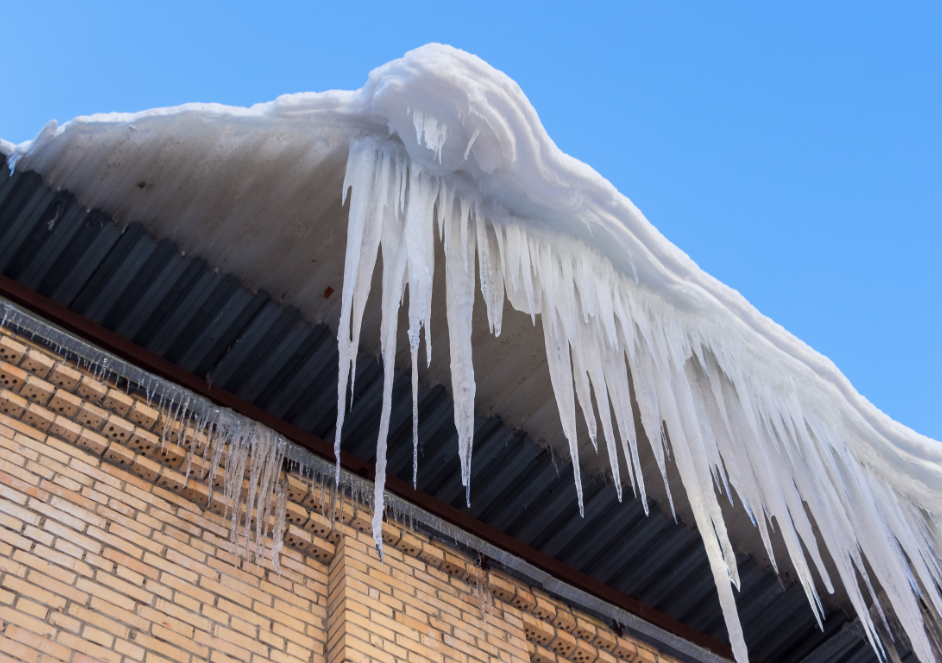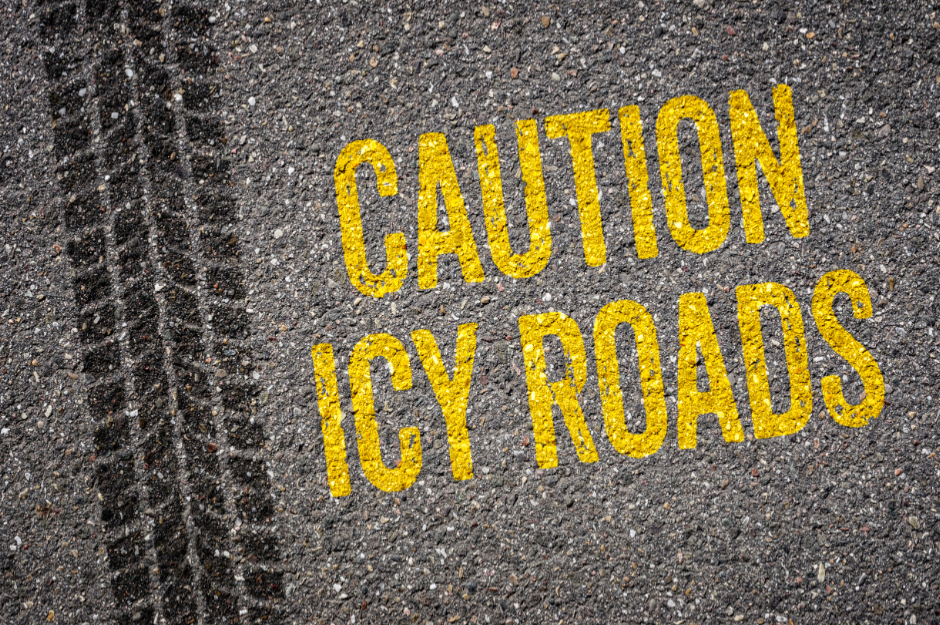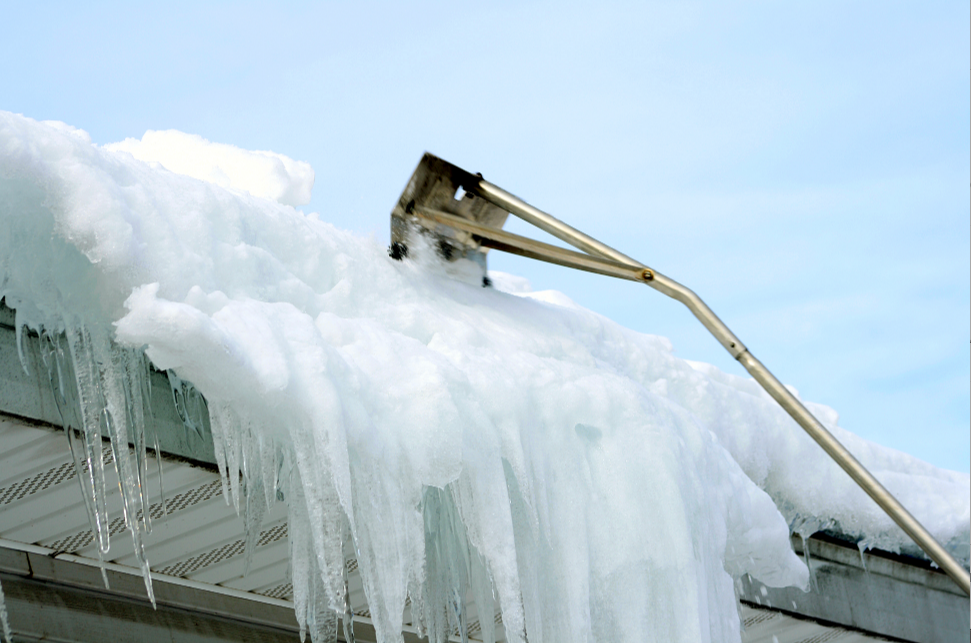
Winter can be especially harsh on a house's roof, and it’s almost never a good idea to simply wait for spring before addressing the issues that the presence of snow and ice on your roof can cause. Five of the main winter roof damage problems that homeowners should be aware of are listed below, along with some advice on how to best manage them.
1. Ice Dam Formation
When warm air rises from your heated living spaces, it warms the shingles of your roof and the snow that covers it. This leads to snow melting and dripping down to the colder edges of the roof where it refreezes as ice. Once the ice grows thick enough, it backs up further snow-melt behind it, causing water to seep under the shingles, and eventually into your home through leakage points. Leaks are made the more likely when backed up water freezes and thaws, working its way into nooks and crannies and expanding them. The number one way to prevent an ice dam is by insulating and ventilating your attic, but you can also lower the risk by cleaning out gutters and downspouts in late fall and using a roof rake to remove snow from the roof's edges. You can also install heat trace cables in the gutters to keep melting snow flowing, thus preventing backups.
2. Icicle Formation
Icicles often result from the same kinds of conditions that cause ice damming. While they may seem harmless, they can actually damage shingles and gutters as well as break and fall on those walking below. Eliminating roof-top air leaks and better insulation will reduce icicles as much as ice dams, but you can also carefully dislodge them with your long-handled roof rake or by climbing up near them with a ladder. Be sure the ladder is securely footed, not on ice, and never walk on an icy roof.
3. Attic Condensation Problems
When your roof is suffering from winter build-up, especially ice dams, there is a good chance that, just below the roof, your attic ceiling will have excessive condensation. Moisture build-up is no minor matter since this can lead to wood-rot and mold. Again, proper ventilation is the answer. However, in this case, it is crucial to plug any leaks in the insulation on the attic floor where moist air from below might enter. Furthermore, appliances, plumbing, dehumidifiers, and other devices can cause excess moisture build-up if malfunctioning.
4. Heavy Rooftop Snow Loads
Different roofs are designed to handle different weight loads, and if too much ice and snow accumulates on top of your house, the risk of roof collapse is very real. Wet snow is especially heavy, but large drifts of even lighter snow can exert significant pressures. Sometimes, poor roof drainage and/or poor construction can make the situation worse and lead to an over-stressed roof that begins to creak, leak, and cause ceiling sagging. This is a serious situation, so you should not delay in calling in the professionals when you see or hear the tell-tale signs.
5. Making Existing Problems Worse
Besides causing new problems, snow load and the freeze/thaw cycle can further loosen already unsecured roof flashing, dislodge shaky shingles, and pry open gutter seams where caulk has already broken. For this reason, it is a good idea to have a roof inspection and maintenance job done before the winter season begins.
These five problems can affect every homeowner's roof during the winter. Taking time to care for your roof just before, during, and immediately following the harsh treatment it receives in the cold season will protect your investment in your home by preventing severe winter roof damage, thereby delaying the need for a new roof, minimizing roof repairs, and avoiding costly leaks.


